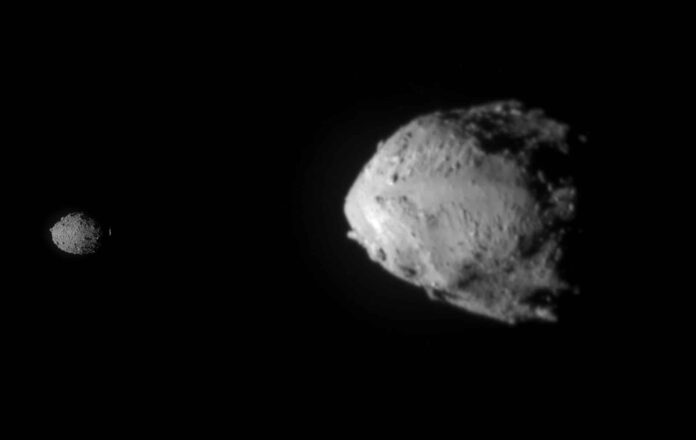
In 2022, NASA intentionally rammed an asteroid, leading to the detachment of several dozen stones from the entity. Some of these stones appear to be on a collision course with Mars.
The DART mission and its aftermath
In the autumn of 2022, NASA’s DART space probe (Double Asteroid Redirection Test) was directed to bore into the asteroid Dimorphos. This successful mission led to the detachment of 37 significant chunks from Dimorphos. According to a recent study, although these stones pose no threat to Earth, Mars may bear the brunt of the impact.
New Insights into the Debris Trajectory
The fact that the DART mission resulted in detached stones from Dimorphos is not news. However, this is the first time researchers have investigated the trajectory of these stones. This study, which is currently undergoing peer review, provides new insights.
Leaving Dimorphos
The study focuses on the 37 stones that were dislodged from Dimorphos during the DART mission. Currently in the vicinity of Dimorphos and Didymos, these stones are gradually migrating away from the Didymos-Dimorphos system due to their minimal gravitational forces.
Simulations Predict Impact on Mars
Researchers utilized simulations to track the destination of these dislodged stones. Initially concerned about potential harm to our own planet, the simulations indicated fortunately there should be no concern, as these stones will come into proximity with Earth’s orbit in about 2500 years but remain almost 3 million kilometers away.
However, the situation is different for Mars. The simulations suggest that within the next 20,000 years, the stones will come close to Mars four times, with a possibility of impacting Mars. If this occurs, the stones will likely remain nearly intact on the Martian surface, potentially creating a crater given Mars’s thin atmosphere.
Implications of the Study
This study is intriguing for multiple reasons. It’s fascinating to envision stones dislodged by human influence potentially landing on Mars thousands of years later. But the implications extend beyond this realization. It is not improbable that stones dislodged from other asteroids may find their way to Earth.
The study also warns of the impact on future missions to asteroids. “The results of this study suggest that future missions involving interaction with the surface of a near-Earth asteroid must be meticulously planned. In particular, a detailed analysis should be undertaken of how any material potentially detached from the surface will behave in the long term.” This is to prevent it from becoming a threat to Earth or operational satellites orbiting Earth in the future.
The learnings from the DART mission suggest that caution is required, not only for space organizations like NASA, but also for private companies intending to extract resources from – and therefore disturbing the surface of – asteroids close to Earth.











